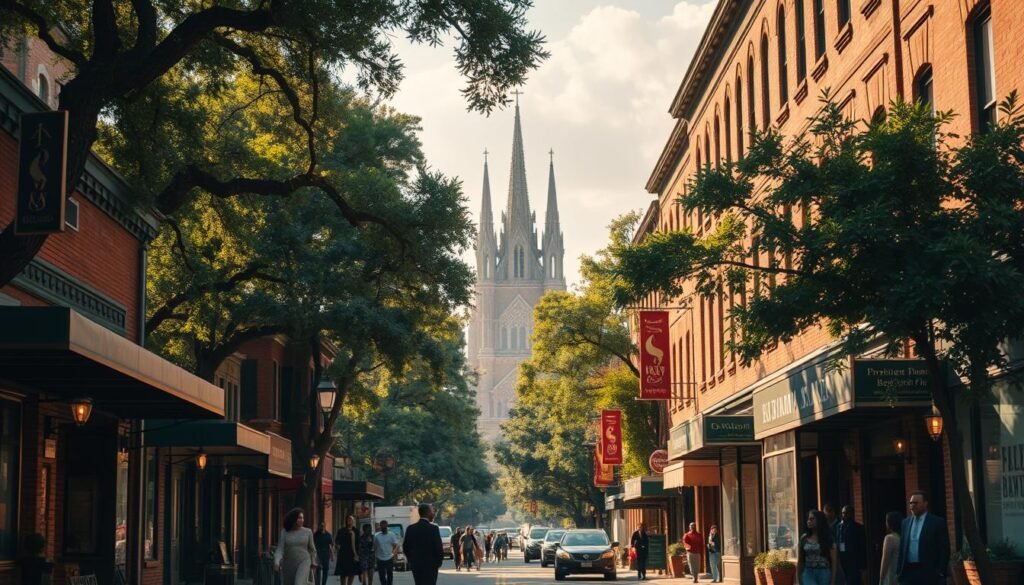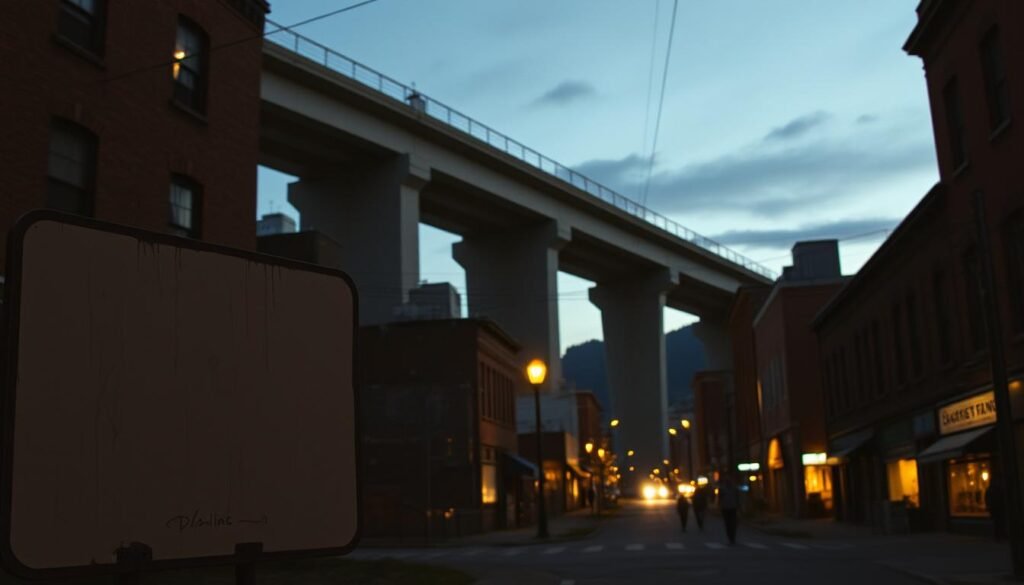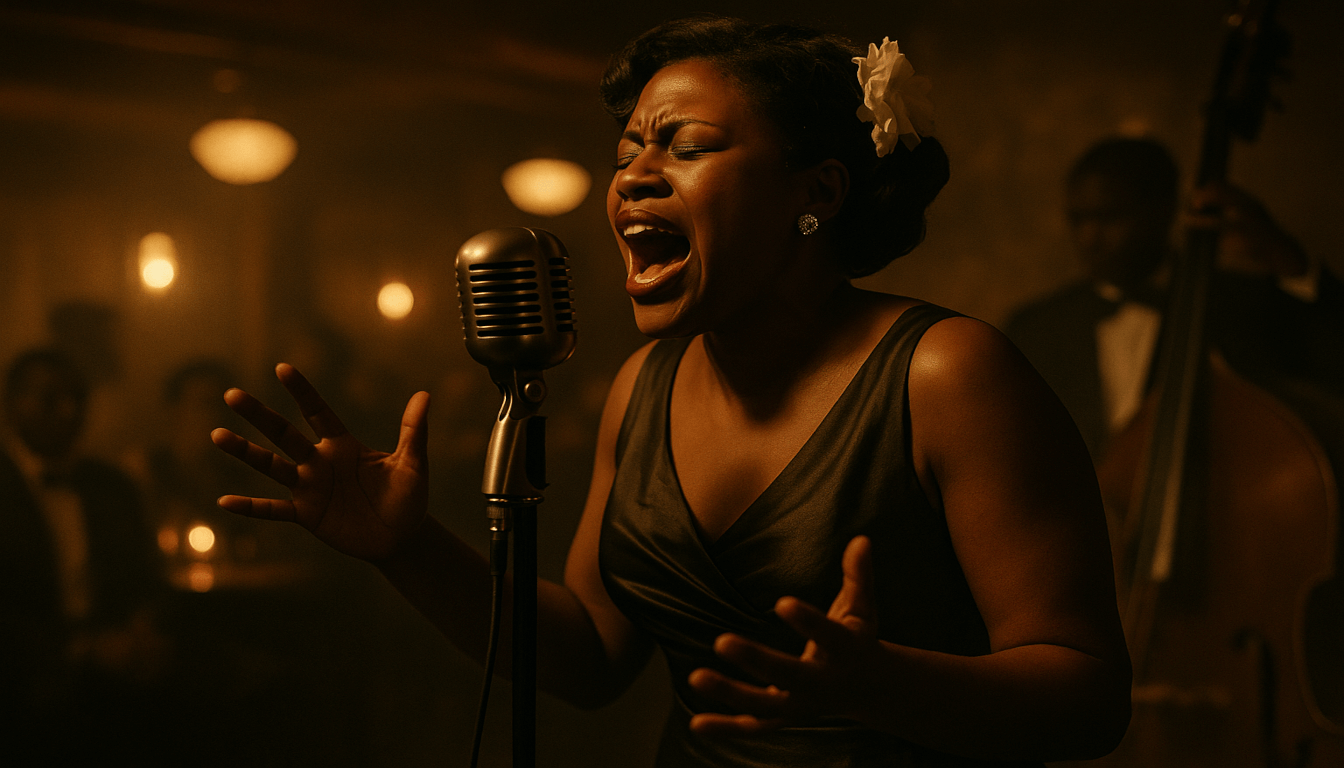Paradise Valley and the adjacent Black Bottom neighborhood formed one of the most powerful hubs of Black commerce, culture, and civic life in early 20th-century Detroit. Together, they anchored a vibrant Black Wall Street that mirrored the economic ecosystems of Bronzeville in Chicago and Jackson Ward in Richmond.
The district bustled with offices along St. Antoine, churches, nightclubs that drew national talent, and a dense network of Black-owned businesses. Entrepreneurs built community wealth despite redlining, licensing barriers, and exclusion from mainstream capital.
By the 1950s and 1960s, urban renewal and freeway construction erased much of Paradise Valley and Black Bottom—displacing families, dismantling businesses, and severing cultural corridors. Yet today, markers and parks honor the legacy of leaders like Coleman Young, Joe Louis, and the institutions that once defined the area.
This article traces the rise, enterprise, and erasure of Detroit’s Black Wall Street, then connects that history to ongoing conversations about equitable development, land use, and downtown reinvestment. To explore other historic districts, visit Black Wall Streets Across America: A City-by-City Guide.
Key Takeaways
- The corridor was a regional center for black business, nightlife, and civic institutions.
- Entrepreneurship and consumer activism forged a durable business ecosystem.
- Mid-century freeway projects led to widespread demolition and community loss.
- Markers, parks, and commemorations now preserve the neighborhood’s legacy.
- Understanding this history guides current equitable redevelopment efforts.
🏙️ From Black Bottom to Paradise Valley: The Rise of Detroit’s Black Business District
Detroit’s Black Bottom and Paradise Valley evolved from fertile land into one of the most dynamic centers of Black commerce and culture in the Midwest. By the early 20th century, these neighborhoods had become bustling corridors of shops, clubs, medical offices, and civic institutions—serving a growing Black population and shaping the city’s social and economic fabric.
Like Bronzeville in Chicago and Sweet Auburn Avenue in Atlanta, Detroit’s Black business district thrived under segregation-era constraints, creating closed-loop economies that sustained families and built community wealth.
🌱 Origins of Black Bottom: Soil, Settlement, and a Name with Many Meanings
The name “Black Bottom” likely referred to the rich, dark soil once farmed by Indigenous people and French settlers. Over time, the area became home to working-class families, Southern migrants, and entrepreneurs, layering cultural meaning onto geographic roots.
This pattern of settlement and transformation echoes the story of Boley, Oklahoma, where land ownership and civic planning empowered Black residents to build independent institutions.
🏪 Paradise Valley’s Commercial Core: St. Antoine, Hastings, and Downtown Proximity
Paradise Valley’s proximity to downtown Detroit, along corridors like St. Antoine and Hastings Street, created a dense hub for Black-owned businesses. The district featured:
- Medical offices and professional services
- Retail shops, restaurants, and hotels
- Nightclubs and performance venues that drew national talent
This commercial density mirrored the success of Central Avenue in Los Angeles and Fillmore District in San Francisco, where Black entrepreneurs built vibrant cultural economies despite systemic barriers.
🎶 Cultural Powerhouses: Clubs, Hotels, and Restaurants That Defined Detroit’s Black Nightlife
In mid-20th-century Detroit, Paradise Valley’s nightclubs and performance venues anchored a thriving Black entertainment economy. Touring acts and local talent packed venues like Club 666, Dancing Doll Lounge, and others—drawing crowds that kept restaurants, hotels, and retail shops busy well into the night.
This nightlife ecosystem mirrored the cultural vibrancy of Beale Street in Memphis and Central Avenue in Los Angeles, where music and commerce sustained entire communities.
🏛️ Notable Detroiters and Landmarks: Joe Louis, St. Matthew’s Episcopal, and the NAACP
Legendary boxer Joe Louis maintained offices on St. Antoine Street, while St. Matthew’s Episcopal Church supported civic institutions like the NAACP, anchoring Paradise Valley’s role in both business and advocacy.
Today, Parker’s Alley and the Paradise Valley marker offer visitors a chance to connect with this legacy—similar to how Sweet Auburn Avenue in Atlanta honors the memory of Martin Luther King Jr. and the institutions that shaped his early life.
💼 Enterprise Under Constraint: Building Business in Segregated Detroit
Despite segregation and systemic exclusion, Black entrepreneurs in Paradise Valley turned necessity into opportunity. These blocks formed a compact commercial district where African Americans built enterprises that served both community life and the broader city economy.
Like Jackson Ward in Richmond and Durham’s Hayti District, Detroit’s Black business corridor demonstrated how concentrated ownership and cultural capital could thrive—even under constraint.
🏙️ Detroit’s Paradise Valley: A Historic Black Business District and Midwest Black Wall Street
During the early 20th century, Paradise Valley emerged as one of the most concentrated centers of Black-owned enterprise in the United States. Fueled by rapid population growth and migration, the district developed a dense market of services that anchored family life and upward mobility.
Migrants built barbershops, beauty salons, boardinghouses, hotels, and restaurants that met both cultural needs and daily demands—mirroring the self-sustaining ecosystems seen in Jackson Ward in Richmond and Hayti District in Durham.
🚶🏾♀️ Great Migration Entrepreneurship: Services for Newcomers and Community Life
Between 1910 and 1950, Detroit’s Black population surged, driven by the Great Migration and industrial job opportunities. Entrepreneurs responded by opening stores along St. Antoine Street, offering housing referrals, food, work papers, and other essentials for new arrivals.
This corridor became a lifeline—much like Sweet Auburn Avenue in Atlanta and Indiana Avenue in Indianapolis, where business owners built infrastructure for community life under segregation-era constraints.
🏪 Black-Owned Businesses at Scale: Retail, Medical Offices, Hotels, and Performance Venues
By the 1940s, Detroit had more Black-owned businesses than most U.S. cities. Firms like Home Milling Company and Supreme Linen and Laundry exemplified how supply chains, food producers, and service providers met cultural demand while creating jobs.
This scale of enterprise echoed the success of Bronzeville in Chicago and Boley, Oklahoma, where Black entrepreneurs built vertically integrated economies that sustained entire communities.

👩🏾💼 Women’s Economic Leadership: The Detroit Housewives’ League and Consumer Power
In the 1940s, the Detroit Housewives’ League became a national model of Black women’s economic activism, mobilizing over 10,000 members to support Black-owned businesses through consumer campaigns, business fairs, publications, and entrepreneurial training.
Operating under the constraints of segregation and limited access to credit, the League amplified consumer power and helped stabilize community firms—demonstrating how organized spending could drive local wealth and business resilience.
Their work paralleled efforts in other Black business districts such as Jackson Ward in Richmond, where women played key roles in sustaining enterprise and civic life.
📊 Economic Impact Snapshot
| Year | Sector | Example |
| 1922 | Food Production | Home Milling Company – cornmeal, grits |
| 1929 | Service Employment | Supreme Linen and Laundry – 41 employees |
| 1940s | Community Organizing | Detroit Housewives’ League – 10,000+ members |
For a concise historical overview see people and places, and read broader economic lessons to compare community strategies nationwide.
🚧 Urban Renewal, Freeways, and Memory: What Was Lost and What Endures in Paradise Valley
In the decades following World War II, urban renewal policies dramatically reshaped Detroit’s landscape—erasing much of Paradise Valley and Black Bottom, two of the city’s most vibrant Black business districts. The Detroit Plan, promoted by developer Eugene Greenhut, set the stage for large-scale clearance under the banner of modernization.
In 1946, the Detroit Housing Commission, led by Mayor Edward Jeffries, formally condemned the area. By 1950, under Mayor Albert Cobo, entire blocks were razed to make way for freeway construction, residential redevelopment, and commercial expansion—displacing thousands and severing cultural corridors.
This pattern of destruction mirrored what happened in other historic Black districts, including:
Today, markers, memorials, and community archives help preserve the memory of what was lost—while local entrepreneurs and preservationists work to reclaim space and rebuild legacy.

🏗️ The Detroit Plan, I-375, and Lafayette Park: Displacement and Construction in the 1950s–1960s
In the mid-20th century, Detroit’s urban renewal policies led to the destruction of key Black business corridors. The construction of Interstate 375 in 1959 severed Hastings Street, a vital commercial spine in Paradise Valley, displacing hundreds of businesses and residents.
Where shops and cultural venues once stood, Lafayette Park—designed by architect Mies van der Rohe—rose as a symbol of modernist redevelopment. Nearby, Pavilion Luxury Apartments, launched in 1956, marked the beginning of large-scale residential transformation.
This pattern of displacement mirrored similar losses in San Francisco’s Fillmore District and Los Angeles’ Central Avenue, where freeway construction and redevelopment erased historic Black business districts.
🕊️ Markers and Memory Work: Parker’s Alley, Fannie Richards, and Frederick Douglass–John Brown
Today, public markers and historic sites help preserve the memory of what was lost. Notable locations include:
- Parker’s Alley (est. 2019)
- The Fannie Richards homesite
- The St. John’s site
- The Paradise Valley marker
- The Frederick Douglass–John Brown meeting place
Figures like Joe Louis, whose legacy is tied to Catherine Street and St. Antoine, remain powerful symbols of Detroit’s Black entrepreneurial and civic history.
🔄 Renewal and Reinvention: Paradise Valley Cultural & Entertainment District and Hastings Place
Recent redevelopment efforts aim to restore cultural identity and revitalize Black business corridors. A 2016 plan by the Downtown Development Authority (DDA) funded the creation of the Paradise Valley Cultural & Entertainment District, designed to celebrate the neighborhood’s legacy through arts, commerce, and public space.
Meanwhile, Hastings Place, led by Hiram Jackson and backed by the Detroit Economic Growth Corporation (DEGC), introduces housing, retail, and a new headquarters for the Michigan Chronicle—a historic Black-owned newspaper.
Local historians and residents continue to advocate for equitable outcomes, ensuring that new development honors past losses and benefits long-term community members.
For deeper archival context see The Detroit Plan dissertation.
Conclusion
The district’s story shows how migrants, organizers, and business owners built wealth despite direct policy barriers.
The legacy of paradise valley and black bottom anchored the city’s commerce and culture. Markers and new plans now link that past to present goals for equitable mobility and reinvestment.
Community groups and entrepreneurs created durable networks that helped a growing population move toward greater economic mobility. Lessons about customer focus and organization still guide modern work, from memory projects to regional planning.
For further context on cultural memory and strategy, read an overview on exploring Black history and practical economic lessons.
Bottom lines: bottom paradise valley, black bottom paradise, and bottom paradise are commitments—to remember, invest, and build opportunity at the local and state level and for the world to study. For a focused historical overview, see a concise entry on Black Bottom.
